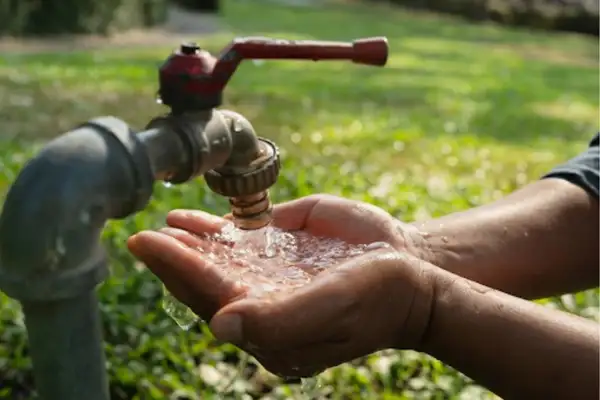The National Green Tribunal (NGT) has criticized the Central Ground Water Authority (CGWA) for its inadequate response to arsenic and fluoride contamination in groundwater.
What are Arsenic and Fluoride?
- Arsenic: It is a chemical element with the symbol As and atomic number 33.
- It is classified as a metalloid, which means it has properties in between those of metals and non-metals.
- Fluoride (F−): It is the anion of fluorine, meaning it is a negatively charged ion (F−) that occurs when fluorine gains an extra electron.
- It is not an element in its own right but a form of the element fluorine.
Nationwide Contamination:
- Arsenic contamination is reported in groundwater across 230 districts in 25 Indian states.
- Fluoride contamination spans 469 districts in 27 states, showcasing the widespread nature of the problem.
Health Impacts of Contamination:
- Fluoride leads to dental fluorosis, skeletal fluorosis, nonskeletal fluorosis, and induces aging.
- Arsenic causes skin de-pigmentation, bronchitis, and skin, lung, bladder, and liver cancer.
- Other adverse health effects from these contaminants include dermatological, neurological, respiratory, cardiovascular, immunological, and endocrine impacts.
Regulatory Standards and Contamination Sources:
- The Bureau of Indian Standards sets the maximum permissible limits: 0.01 mg/L for arsenic and 1.0 mg/L for fluoride.
- Arsenic contamination is primarily due to weathering of minerals, leaching, runoff, and anthropogenic activities such as mining and over-exploitation of groundwater.
- Fluoride contamination results from the breakdown of rocks and soils, along with the deposition of atmospheric particles.
CGWA’s Current Infrastructure and Actions:
- The CGWA operates 16 chemical laboratories nationwide, with 10 certified by the National Accreditation Board for Testing and Calibration Laboratories.
- These labs annually test between 27,500 and 32,500 water samples for a spectrum of 15 major chemical parameters, including arsenic and fluoride.
- Despite the grave health risks posed by these contaminants, the CGWA has yet to install necessary arsenic and fluoride removal plants in affected areas.
Initiatives for Quality Water in India:
- CGWB is responsible for generating data on groundwater and monitoring its quality.
- The Ministry of Jal Shakti has issued guidelines for the control and regulation of groundwater extraction to combat contamination.
- National Water Mission (NWM): Launched under the National Action Plan on Climate Change, it aims to increase water use efficiency by 20% and promote basin-level integrated water resources management.
- Atal Bhujal Yojana: It includes community participation and demand-side interventions for sustainable groundwater management. It is being implemented in seven Indian states with a significant focus on replenishing groundwater levels and promoting water conservation practices.
- Har Khet Ko Pani (HKKP): As part of the Pradhan Mantri Krishi Sinchai Yojana (PMKSY), this initiative aims to provide water to every agricultural field to improve irrigation facilities and ensure efficient water usage for farming, thereby reducing wastage and enhancing crop yields.
- Atal Mission for Rejuvenation and Urban Transformation (AMRUT): This mission targets the development of urban infrastructure with a strong emphasis on water supply, sewerage, and septage management, aiming to provide a significant boost to water quality and availability in urban areas.
- Jal Jeevan Mission-Har Ghar Jal: Launched in 2019, this mission aims to provide every rural household with a tap water connection by 2024, ensuring access to safe and adequate drinking water. As of early 2023, significant progress has been made towards achieving this goal.
Ref: Source
| UPSC IAS Preparation Resources | |
| Current Affairs Analysis | Topperspedia |
| GS Shots | Simply Explained |
| Daily Flash Cards | Daily Quiz |



